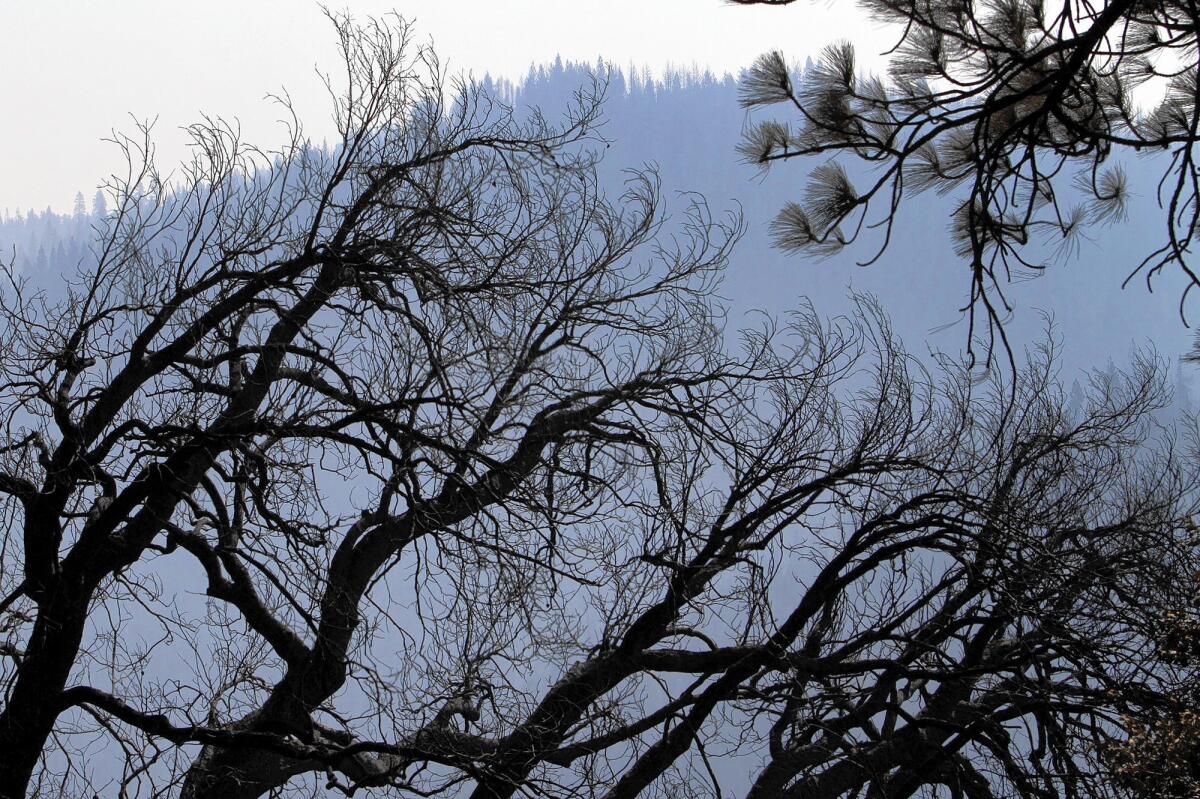Rim fire’s ‘ghost’ trees to be logged, U.S. Forest Service decides

- Share via
The debate began as the largest blaze ever seen in the Sierra still burned: Should officials cut down the thousands of “ghost” trees left behind by last summer’s Rim fire, or leave nature alone?
A decision announced Wednesday by the U.S. Forest Service calls for salvage-logging on more than 15,000 acres in the Stanislaus National Forest and the removal of an additional 17,706 acres of trees along non-public roads.
Because the logging value of burned trees deteriorates quickly, the plan was formed under emergency rules and cannot be appealed. Salvaging can begin as soon as forest supervisor Susan Skalski gives her approval, which is expected Thursday.
“The chain saws can start like one minute later,” said Chad Hanson, director of the John Muir Project of Earth Island Institute.
Hanson is part of a vocal coalition of scientists and conservationists who have argued against the plan. They contend that the mature areas of the forest, which burned the hottest, are regenerating. The so-called snag forests, they say, are greening and filled with wildlife — providing a crucial Sierra habitat. They also argue that those areas of high bio-diversity could bring in more dollars through recreation than logging.
But the battle lines in this fight are blurry. Supporters of logging included local conservation groups, birding clubs and Indian tribes. They fear the burned trees would be fuel for the next fire.
In the written decision, Skalski said:
“In some instances public safety goals are in tension with environmental protection goals; in other instances socio-economic goals are in direct tension with fuel reduction goals; and, in other instances the needs of one wildlife species are in tension with the needs of another.”
The plan calls for the logging to be done through a variety of methods, including road-based and by helicopter. The Forest Service said no permanent roads would be constructed as a result.
The wood harvested from the burn area could provide a boost to California’s dwindling timber industry, which includes mom-and-pop mountain trucking companies.
While there was no dollar estimate attached, the Forest Service will be selling more board feet of timber as a result of the Rim fire than the combined total sold last year in all of California’s national forests. A logging official said a conservative estimate was $100 million.
David Bishcel, president of a forestry professionals organization, said he was eager to see the plan initiated.
“Forest management activities need to be completed in a timely manner for the best possible outcome that contributes to restoration of our forestlands and balances the environmental, social and economic benefits they provide, including a continuous source of cold, clear drinking water,” he said in a statement.
The Rim fire began as a hunter’s illegal campfire on Aug. 17, 2013. It burned for more than two months, spreading over 154,430 acres of chaparral and timberland in the Stanislaus National Forest, about 24,000 acres of private land and roughly 77,000 acres in neighboring Yosemite National Park, including all around the Hetch Hetchy Reservoir.
The burned areas within Yosemite will not be logged. Logging in the national forest is expected to begin Sept. 5.
diana.marcum@latimes.com
Twitter: @DianaMarcum







